
before we learn to talanoa
Lily Aitui Laita and Ululau Ama
8 Aug - 20 Sep, 2025
Summary
before we learn to talanoa brings together a selection of works by the late artist and educator Lily Aitui Laita, and Māpura Studios artist Ululau Ama.
With her characteristically expressive style of painting Lily Aitui Laita has achieved widespread success and recognition over her prolific exhibiting career spanning 25 years. Graduating from the Elam School of Fine Arts in 1990 as its first Pacific woman graduate, it was never her intention to create a legacy, but the reality is her vast and enduring influence paved the way for others like herself. Laita considered art as a bodily function, a continuation of play that is a primal form of communication, even before we learn to talanoa.
Ululau Ama carries that same spirit forward. A visual storyteller, art is how Ama communicates. His works are sometimes figurative, and sometimes textural and expressionistic, the colours of which reference what is going on around him – always in flux. Both artists with their abstracted subjects explore an ambiguous sense of space and time, communicate their interactions, dreams, mythology, journeys and notions of intuitive and learned knowledge. In this way, they showcase just how art can become a vehicle for discussion and discourse all the while representing the ability to enjoy freely.
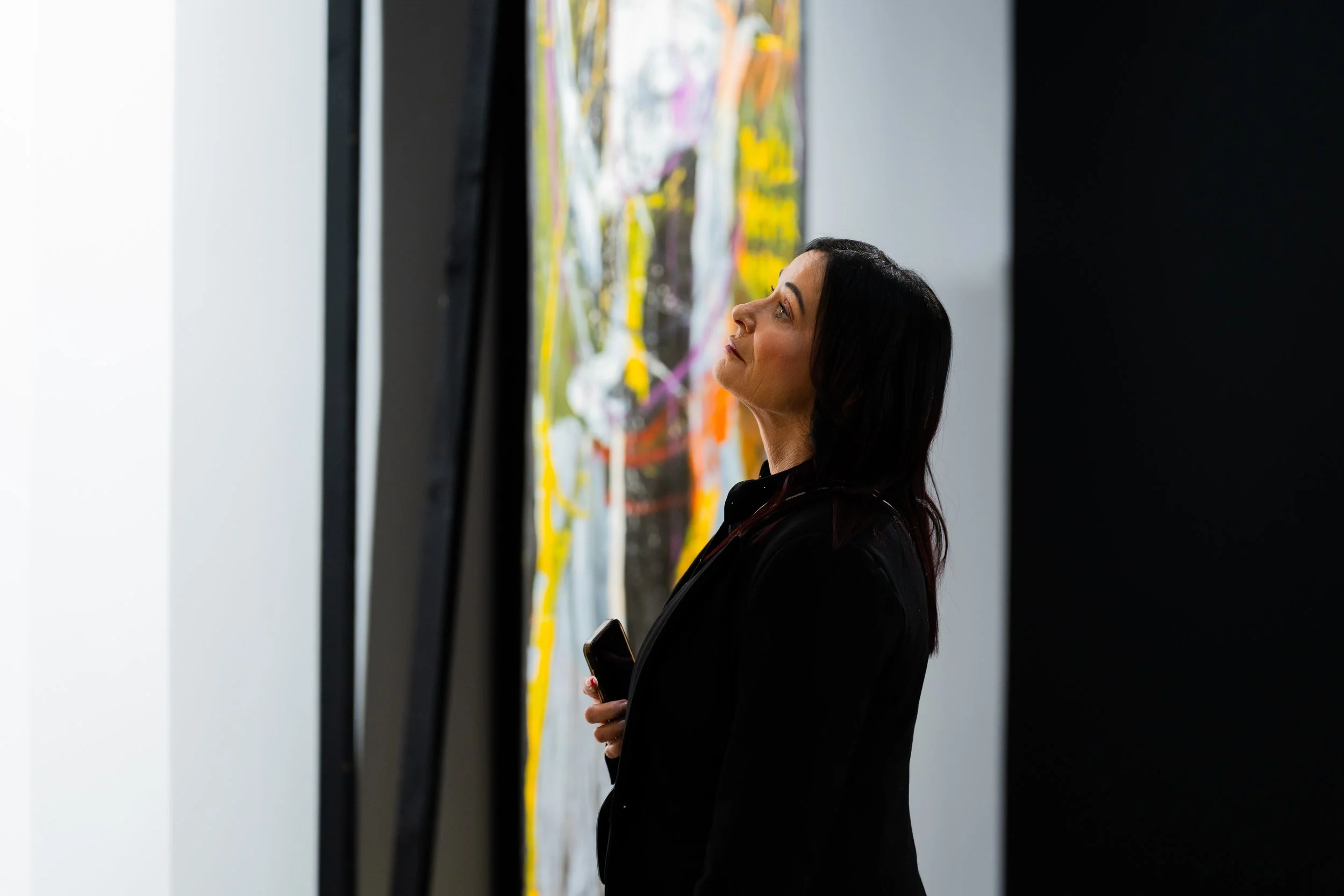
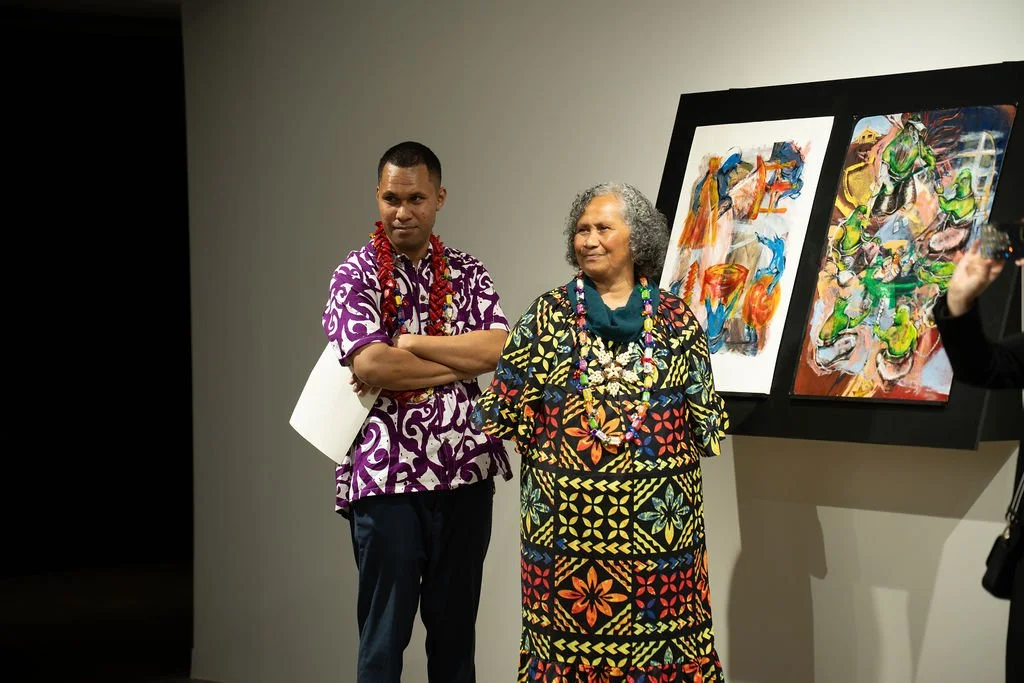
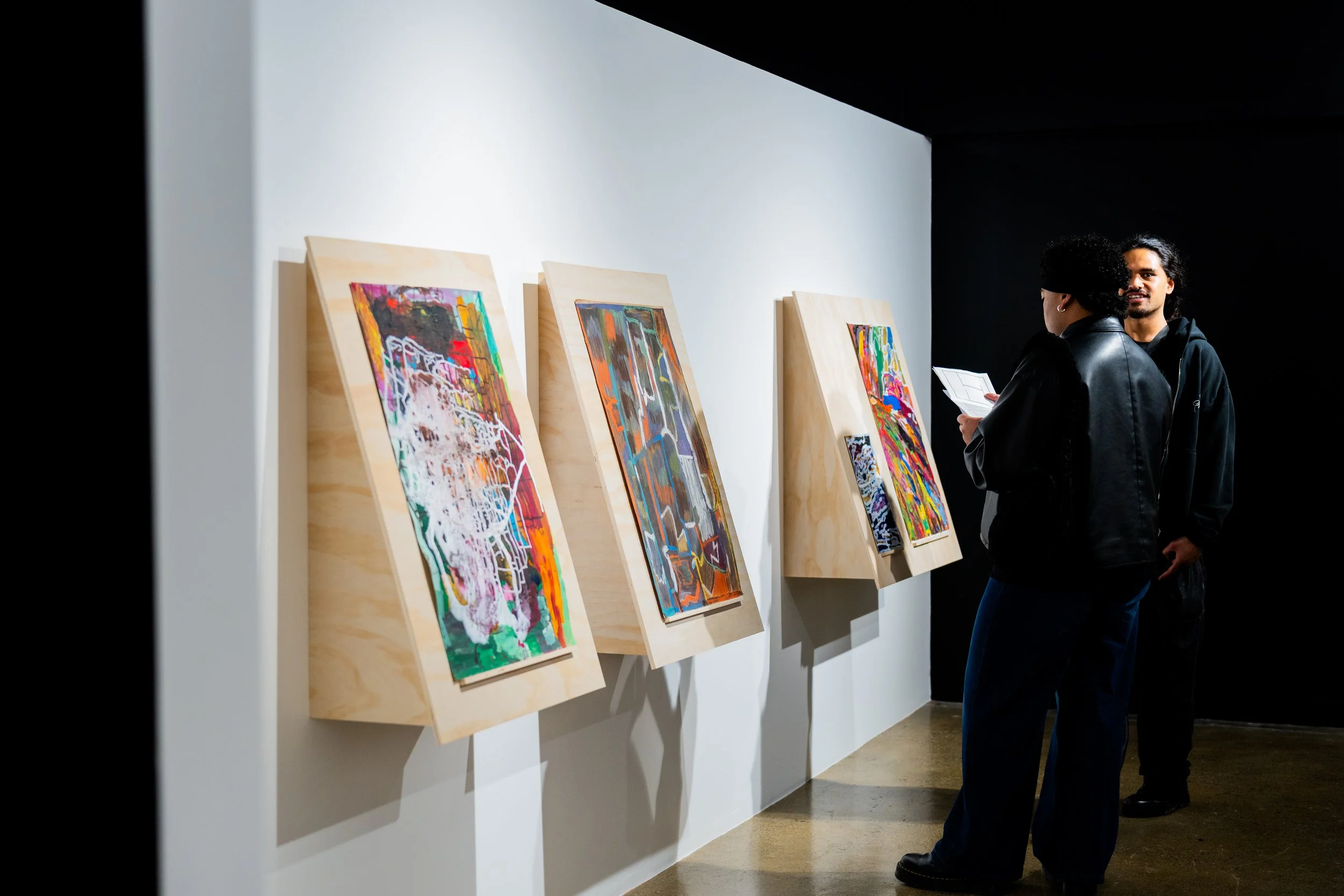
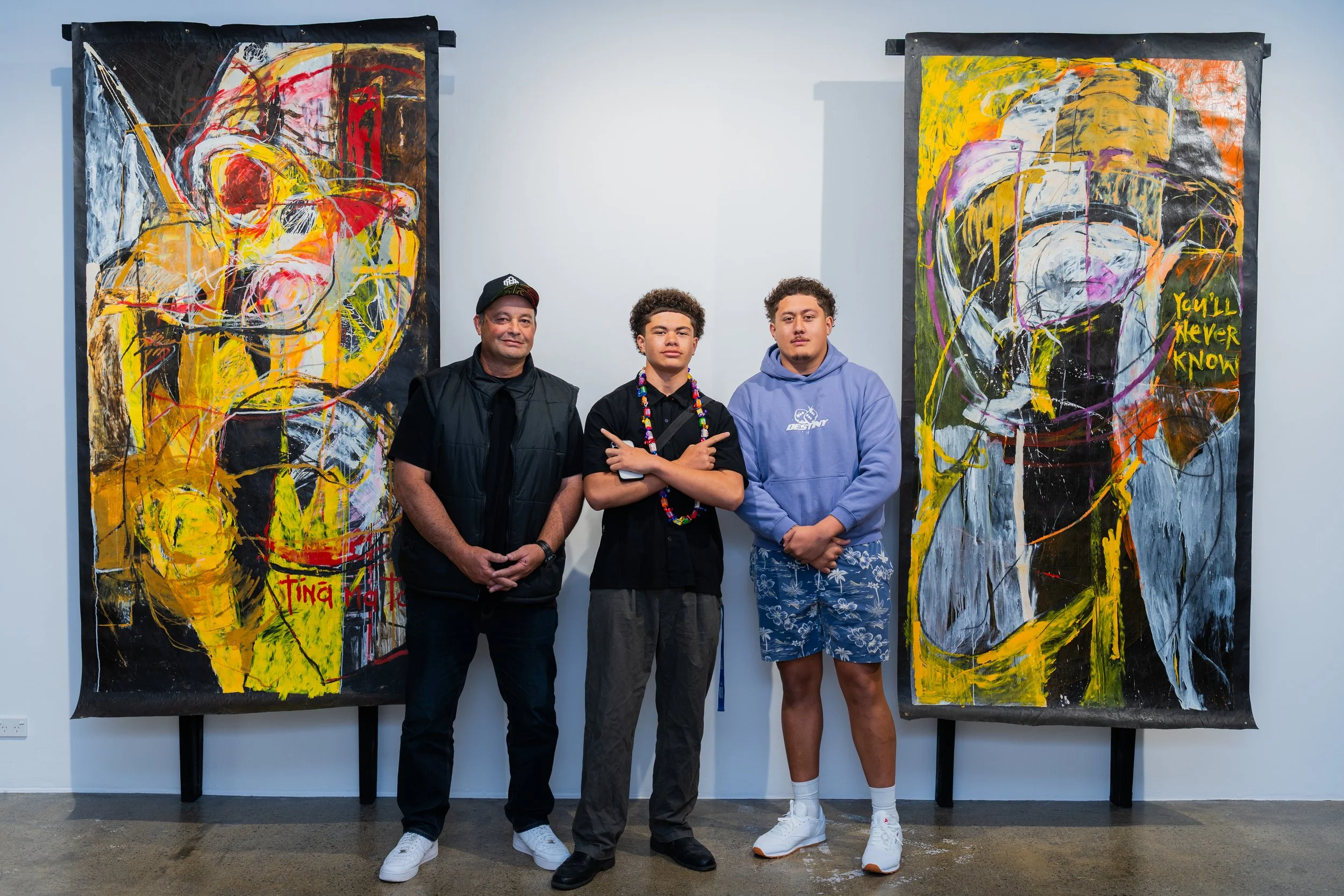
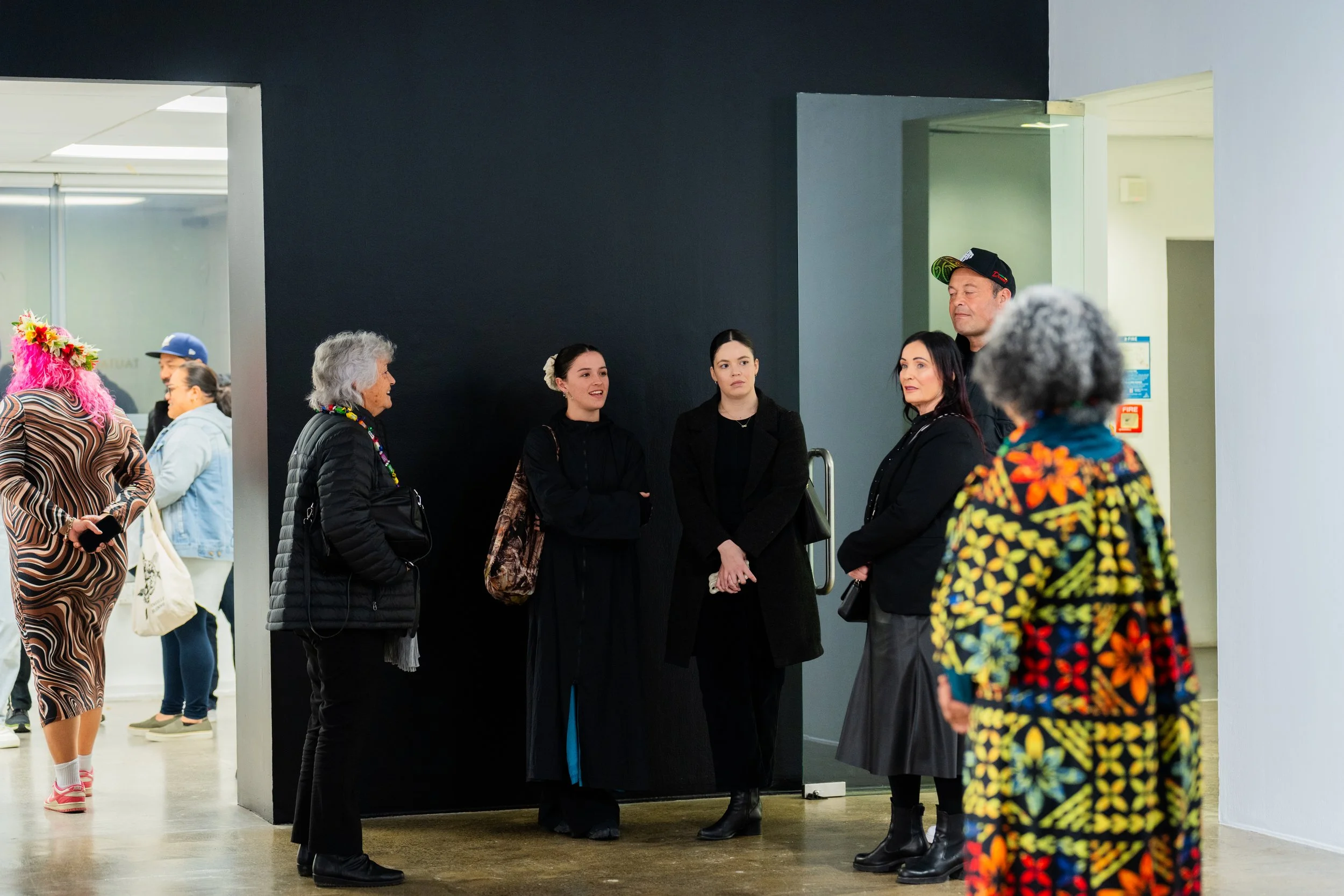
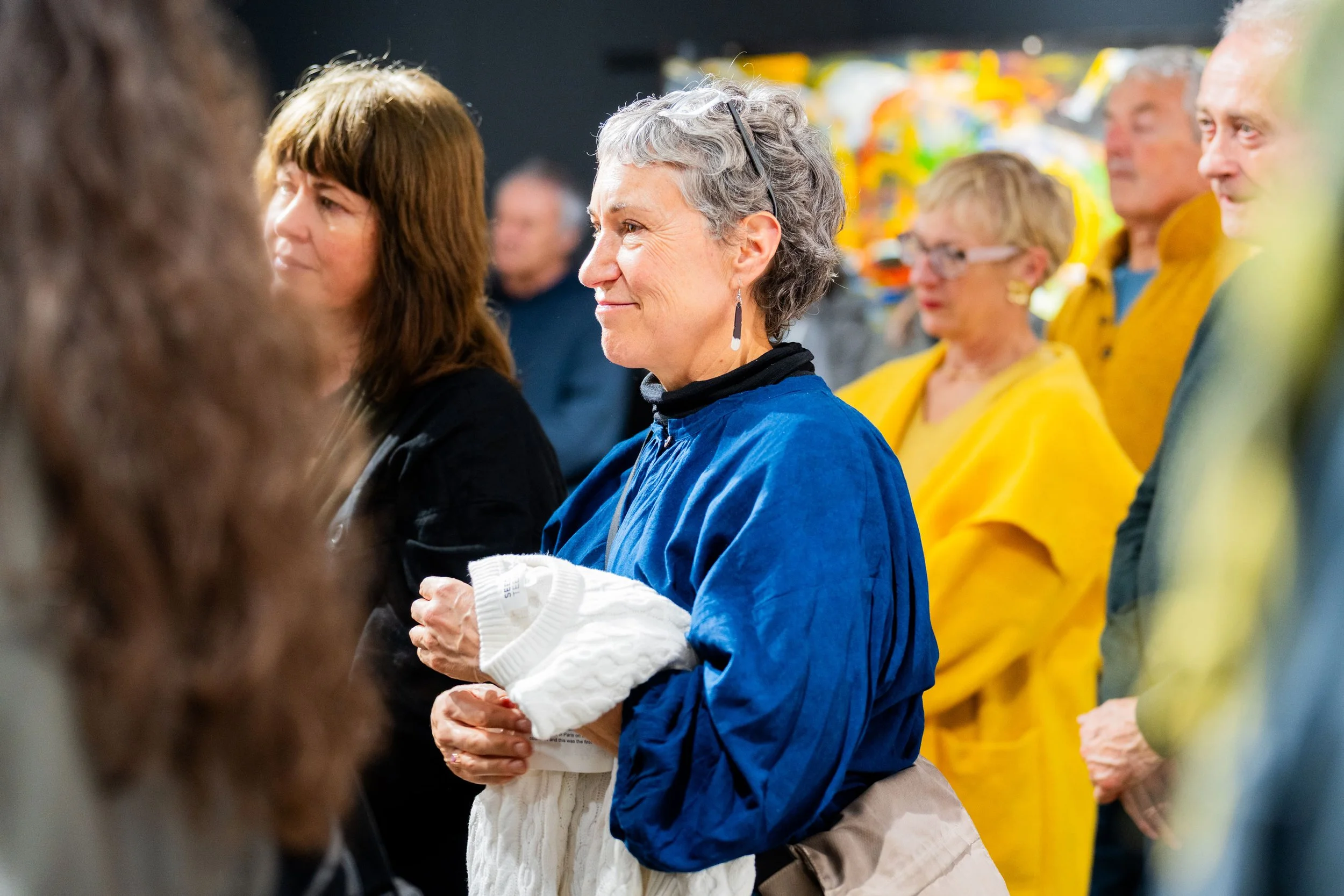
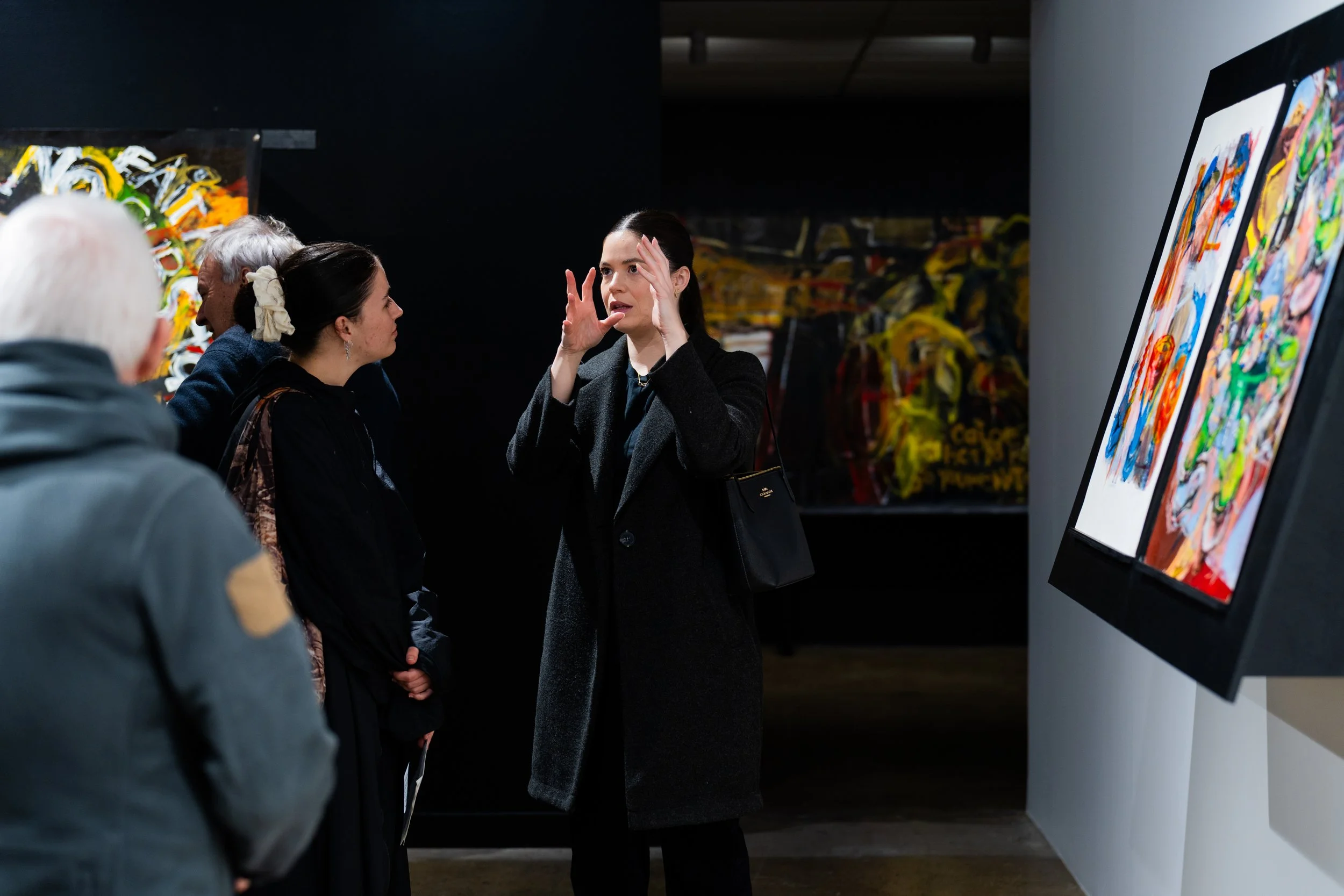
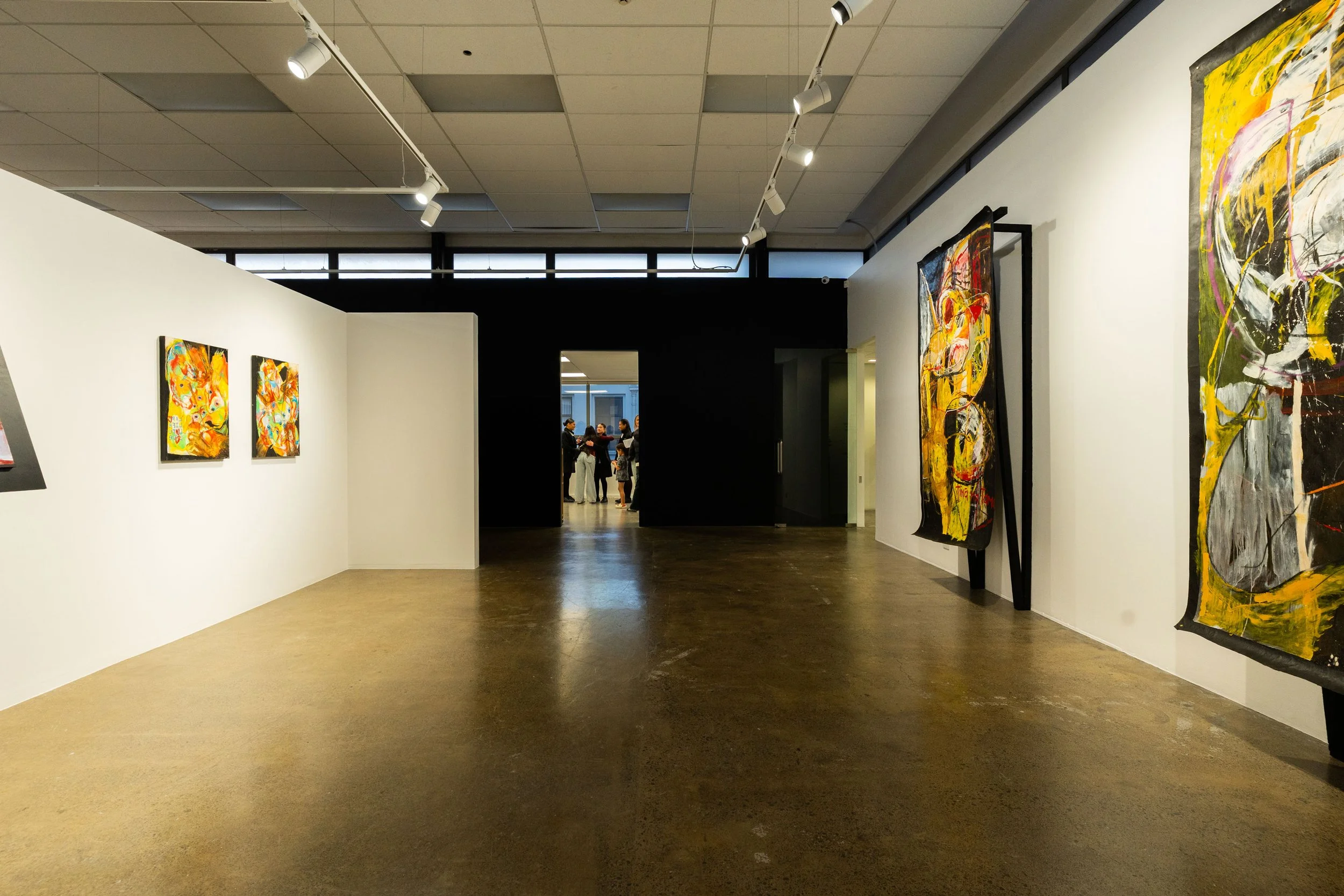
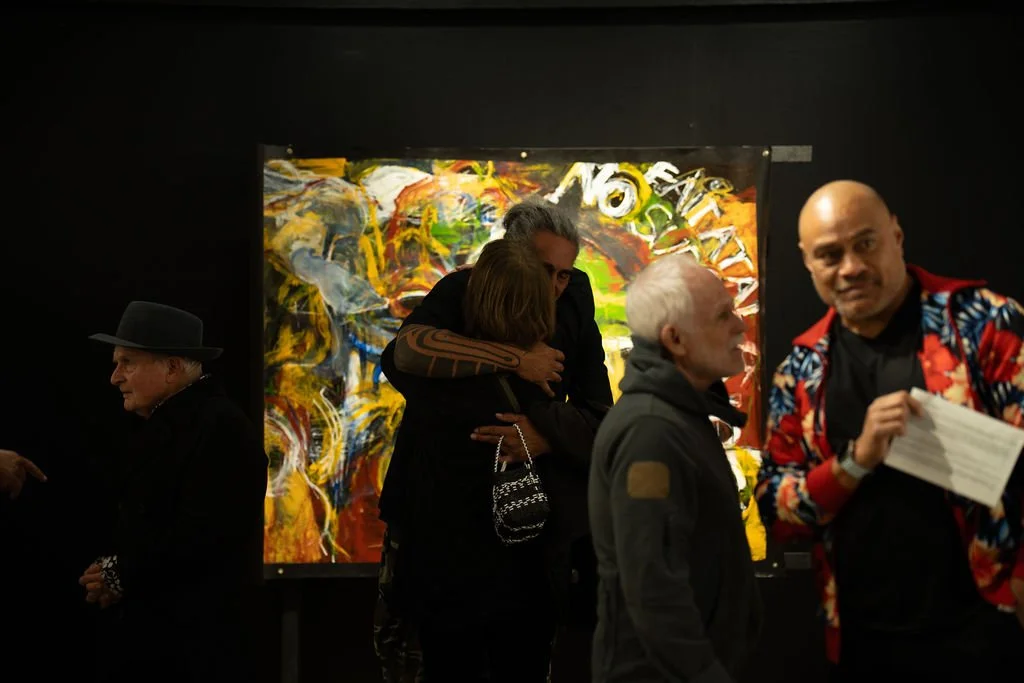
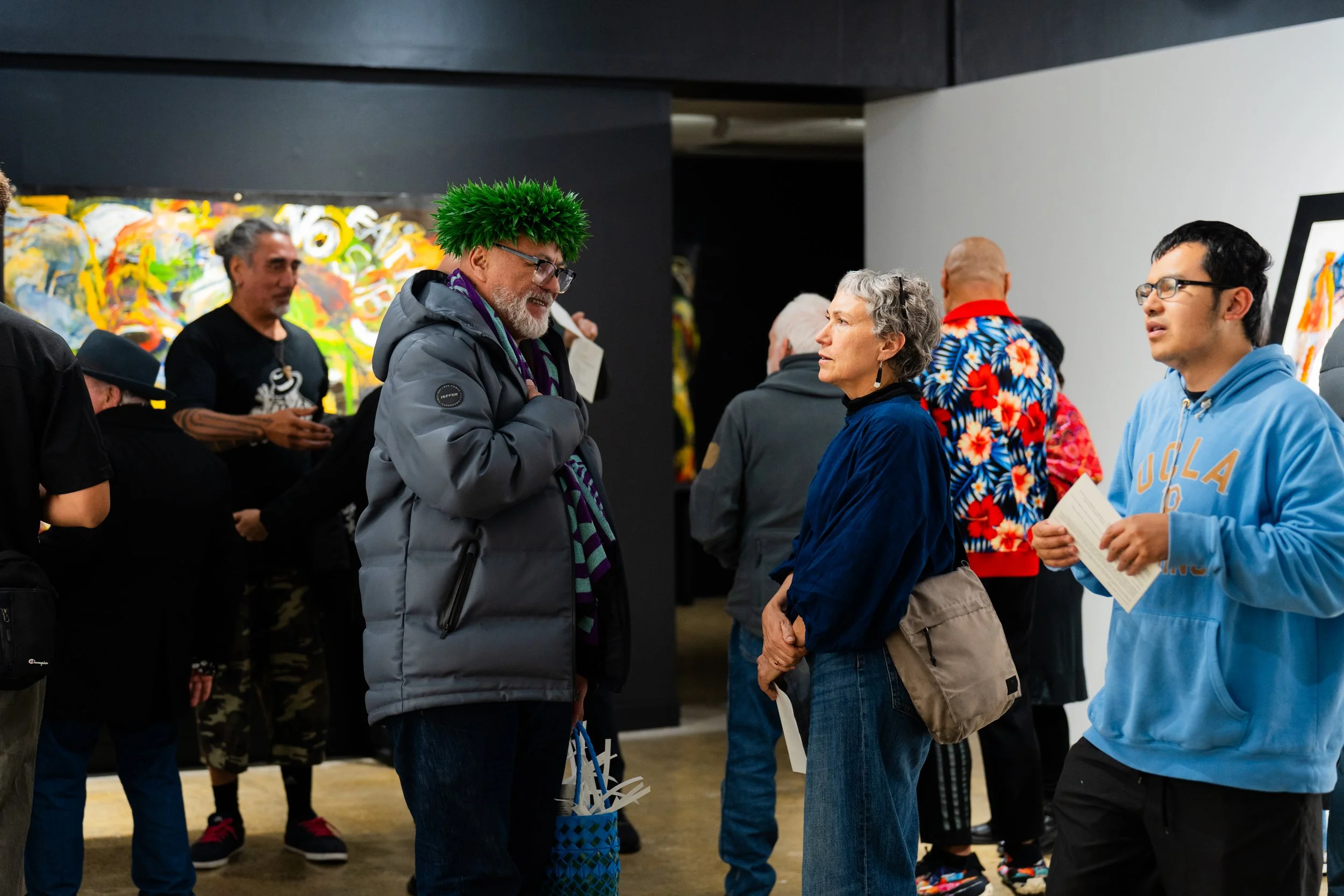
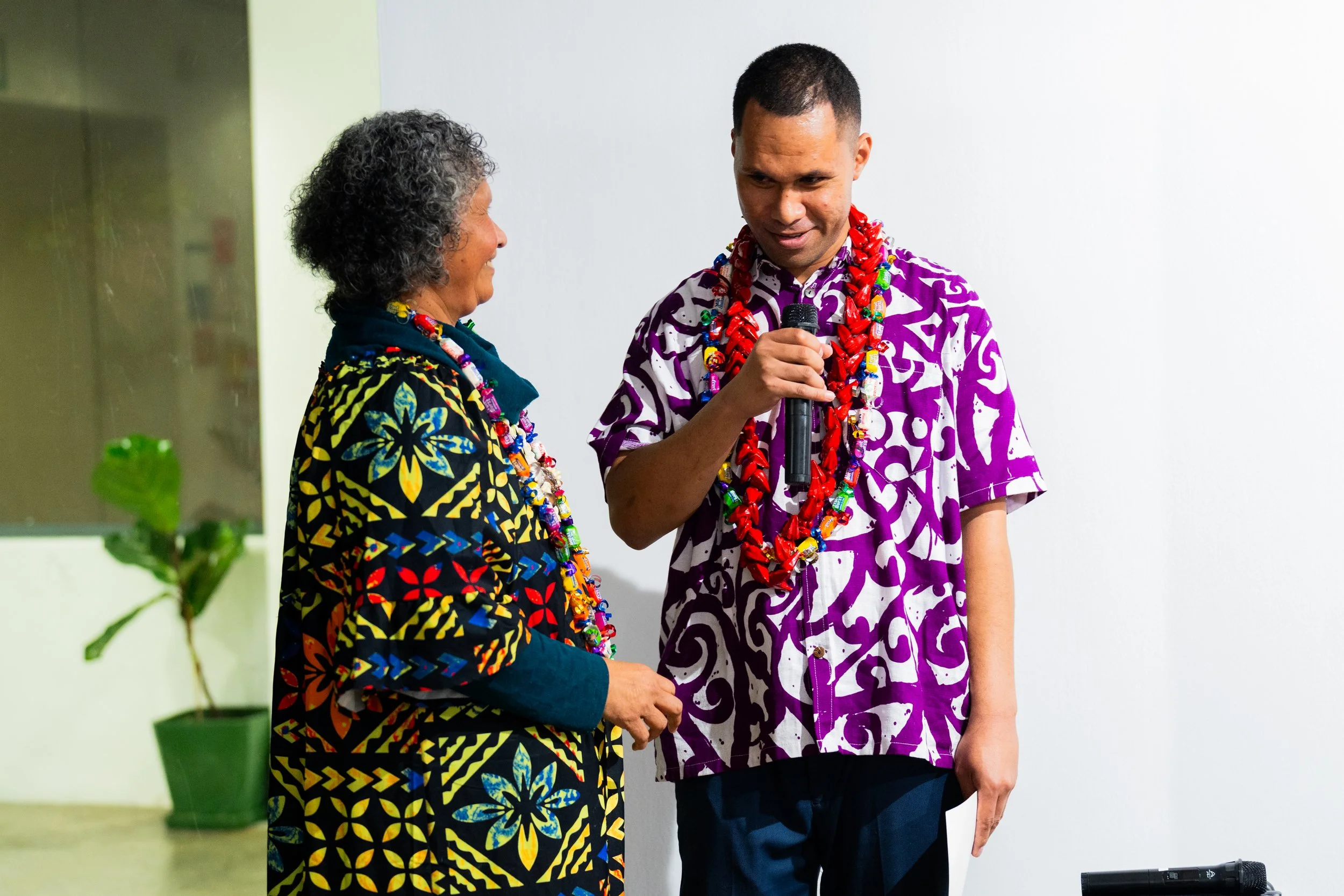
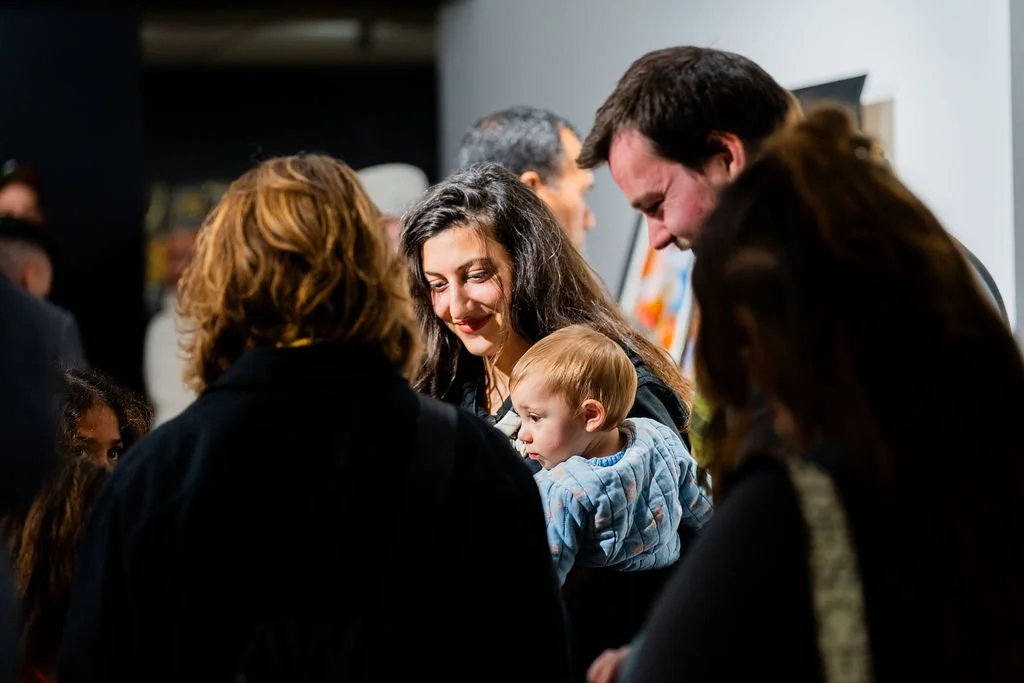
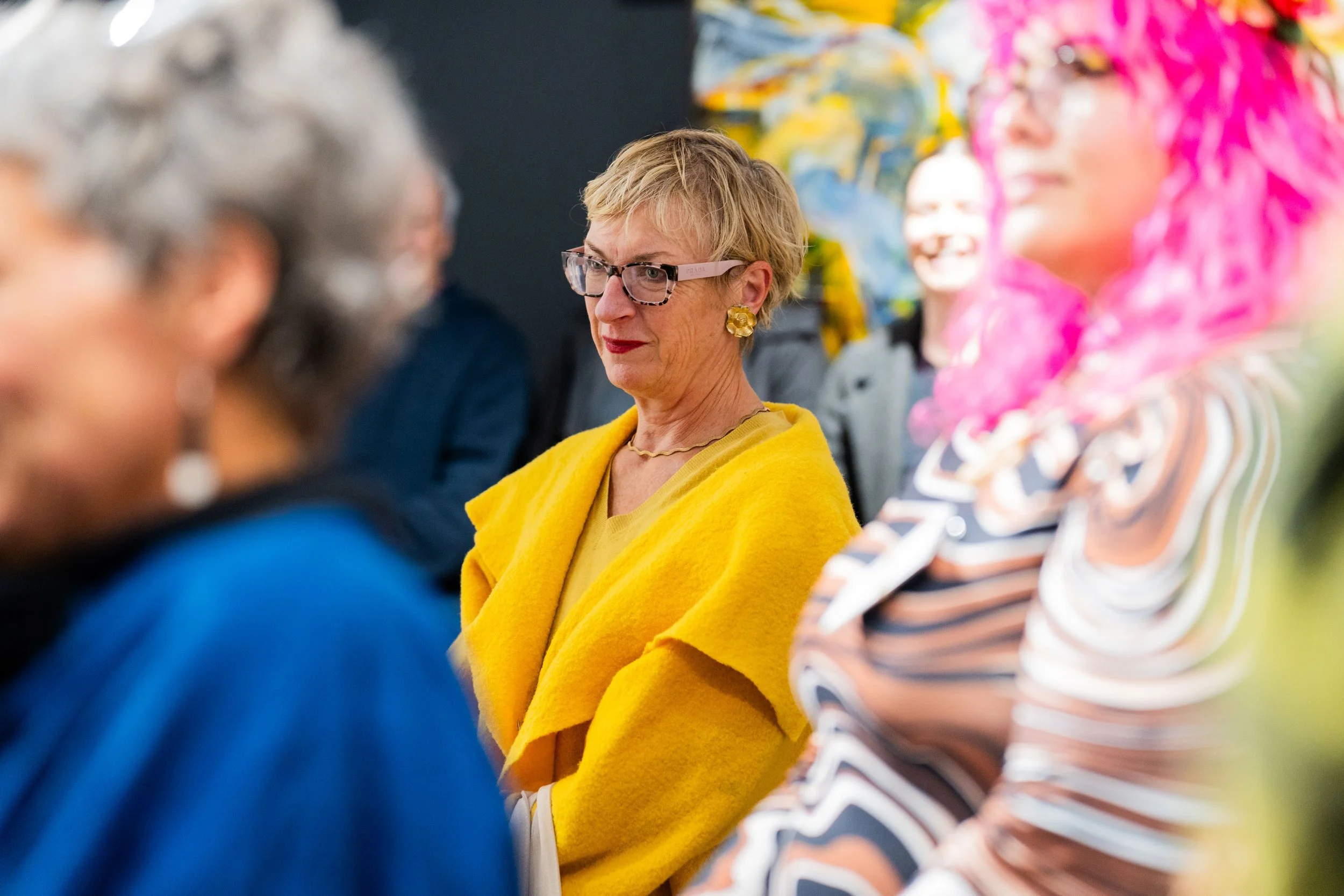
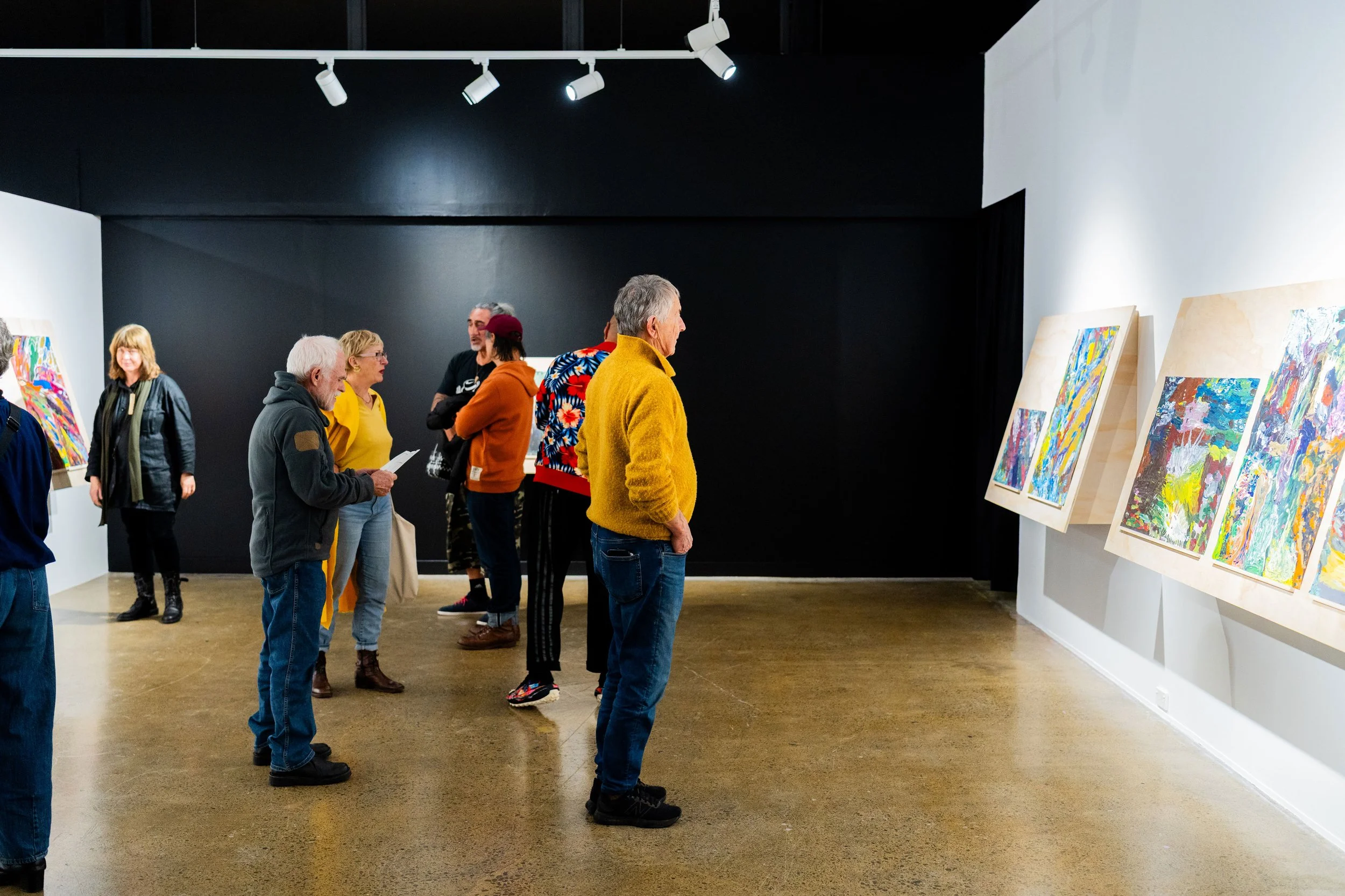
-
before we learn to talanoa
Elisabeth Pointon
It was never Lily Laita’s intent to create a legacy, but here we are. In 1990 Lily graduated from the Elam School of Fine Arts, one of the first women of Pacific Island or Māori descent to have done so. Far from being a “prestige thing” for Lily, it had been a necessary step in the attainment of one specific goal – “going to Elam was a great way to get to teacher’s training college.” A year later, Lily would complete a Diploma in Teaching, and in 2002 she would receive her Master of Fine Arts, in Painting. For more than three decades Lily served as the Head of Art at Western Springs College, teaching and inspiring a generation of artists in expressive painting and making.
It was creating art opportunities for others that was a large motivating factor for Lily, especially to promote strength in numbers and visibility for Pacific arts practice. She had considered herself immensely privileged for having met and worked with “awesome dealers and legendary demi-gods like Momoe Malietoa von Reiche, Fatu Feu’u and the late Jim Vivieaere” crediting their ideals and values for fuelling a cultural growth and social conscience that was, granted, always there as well “as tangible links through ‘real-life’ art making that reflected value beyond the studio and gallery.” Laita would later serve on various Pacific art committees, including the chair of Tautai Trust, where she gained contextual insight into the administration side of the industry.
Over the course of her life, painting was Lily’s primary medium – the style of her works suited the freedom it offered. No works were ever undertaken with a set image in mind – rather, images emerged from the works as she painted. Her hands are all over the works, and she would often state that she simply liked to play.
“Only the play seems quite profound.”
Lily saw painting as accessing a vā beyond the physical picture plane. Another space - time where she could activate and juxtapose mythology and contemporary concepts and experiences. The vā is also a state of making, becoming, creation through construction and deconstruction. On the far end of the first gallery hangs no substance which embodies this concept. When we first unrolled it (Vicki, Lily’s mother, told us they had been stored in the rafters), strips of what we thought was simply excess paper tumbled out. Piecing it together, we realised that these strips were from where Lily had cut the painting, evident by the clean, painted edge. It suggests she wasn’t quite done with this one yet, and that maybe she had planned to collage this work at a later date.
Abstract figures and landscapes emerge gradually, echoing how traditional knowledge is often revealed over time. Lily’s work foregrounds oratory and mythology, inviting viewers into complex narratives that resist linear interpretation and instead privilege multiplicity, intuition, and quiet revelation. Primarily working at large scale seems to make sense for someone like Lily who, rightfully so, had a lot to say. Her works are layered with cultural, historical, and personal references (some of her texts are direct extracts from things said about and to her), drawing from Samoan, Māori, and English language sources. From 2002, the use of text as a form is painted backwards referring to the first written known Samoan texts in English, although it also reinforces Lily’s reference to the ethereal vā of the picture plane. Her works took on a diaristic quality, as she took on the world around her.
In her early works she did not explicitly employ Pacific motifs, rather she opened her conversations with strong, painterly gestures. Throughout the works on display you will see abstracted references – the kava bowl is repeated throughout the works on display. In her smaller scale works however, the lupe since her work with the VAhine Collective with Lonnie Hutchinson and Niki Hastings-McFall, would become one of her more immediately distinguishable. Other repeated symbols like the Samoan flag, and Union Jack would often be abstracted to just colour palette.
She drew on the past heavily – both her Māori and Samoan Cultures were a touchstone for her with the belief that “the departed continue to influence the lives of the living”. Painting became a direct link to her ancestors with the only way for her to start painting, was to start from the beginning. She used to paint on black so that things emerged out of the dark, figures from the past.
“It is like being able to see them. The visual is painting; the physical is actually a feeling.” It is here that experiencing her works becomes an embodied encounter.
An enduring criticism of sorts was Lily’s continuous working on paper. She was known for working on black builders’ paper, some of which her brother, a brick layer at the time, lifted off building sites. At one stage she was offered builders’ paper for free from a paper mill, who would mention her “endorsement” in publicity material. Also at this time, Lily’s father made concrete tanks, and her mother was an industrial machinist – intensive labour underpins the works.
It would take a long time before Lily would work on canvas (Vicki told us that Lily had preferred the size of the building paper and using her hands to work the paint, as working on canvas with a brush physically hurt). When she became a mother, her studio would become more domestic often utilising the dining room – as such her works sized down and became more defined.
She simply loved the process of making, so evident in all her works. It was her happy place. Lily saw art as a bodily function – a continuation of play “that it is the primal form of communication even before we learn to talanoa. I think it is integral to everything you do: your mana, your aura/ au ra - what signifies you as an individual and marks your difference.”
Ululau Ama carries this spirit forward. A visual storyteller he too draws from Samoan culture to create works that are sometimes figurative, and sometimes textural and expressionist in nature. The colours reference what is going in around him – the colour of a shirt, the sea, the people – always in flux.
Art is how Ululau communicates. Born in 1994 in Samoa, he had meningitis at three months old, later being diagnosed with epilepsy. Maununu Sa’anga Ama, Ululau’s mother, and her three children came to Aotearoa from Samoa in 2013 to join her husband. That same year Ululau started attending classes at Māpura Studios, and two years later Maununu accompanied him, as he was having seizures. As Maununu had to spend a lot of time in the studio, she was invited to join the classes as an artist, and here she learnt that she too could paint and draw. While doing printmaking, the two of them would play a game to see who could create the most beautiful prints with no mistakes. These games built the foundation for Ululau’s confidence, and through his respective tutors he has learnt to create with focus, technique and pride. This duo inspires one another, and in cases where words are needed, Maununu helps Ululau out. Like Lily, the words, primarily the titles of the works themselves, become an entry point for alternative readings of his works which document moments in Ululau’s life that have had a profound resonance.
Upon collecting Ululau’s works, Maununu shared that often Ululau accompanies her to prayer group. To the surprise and delight of Maununu, after a while, Ululau’s paintings started exuding stories of spirituality shared at these meetings. His recent work Jesus Loves You & Me, his submission to the 2025 IHC Art Awards is such an example. The description of the work reads “Our different colours, our shapes, big or small, fat or thin, tall or short, whatever it is, wherever we are… Jesus loves us all the same.”
Ululau is always working, not only out at Māpura Studios, but also as a member of the Tōfā Mamao Collective. He too has an extensive CV, and in 2024, three of Ululau’s paintings were included in the ArtPara Shine Together exhibition at the OECD Headquarters in Paris alongside the 2024 Paralympics. The exhibition comprised of art from 27 countries. This was the first time New Zealand was included. These framed works at the entry to his space epitomise his respective, diverse application of paint and colour. Meeting new people, creating new works and sharing them is what lights Ululau up, and interest in his works inspire Ululau to create more. To Ululau it’s not the money from sales that make him happy, but the mutual joy between artist and viewer.
As Maununu says “The blessings in art for Ululau are not for him and I to keep. We need to reach out to share our experiences in the community to inspire and to make others know that art is healing, art is relaxing, and that everyone can do art.”
The universal agreement that art is very important is not new, but it can still be difficult to quite say why. Both Lily and Ululau refuse the idea of “art for art’s sake” instead revealing its therapeutic potential, and just perhaps upon experiencing their pieces, also help us to lead more fulfilled lives. Both these artists demonstrate arts relevance in understandable ways, to the widest possible audiences. before we learn to talanoa is a quiet unfolding - a meeting place where two artists, perhaps kindred spirits, trace memory, spirit, and sensation through paint.
Tautai Pacific Arts Trust would like to thank Vicki and the Laita family for the generous loan of her works, and Māpura Studios, Maununu and Ululau Ama for the opportunity to host his.
